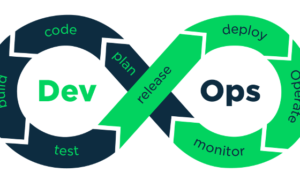It helps break down complex information into simple, digestible points for a diverse audience, encouraging knowledge transfer, among many other benefits. It actually acts as a bridge between subject matter experts and end-users and ensures they have a clear understanding of the subject matter. If you’re curious as to how this can help modern businesses, then you will actually be on the right track by reading on.
Let’s uncover some basics
Suppose you have a tech product that can rock the market and help you discover new audiences. As much as marketers might help you take the product to these audiences, you’d want them to have a clear understanding of its benefits and features; otherwise, they may not be able to capture the real value, which could negatively affect sales. Marketing experts also need to be familiar with the product.
It’s similar to running a business on multiple technologies that help improve its efficiency and agility – you will need to explain to your workers how these technologies work. It’s even more serious with newly recruited team members. Technical writing adds to digitization efforts and also helps to bring shoppers closer to your products.
With many businesses adopting this trend, the US Bureau of Labor Statistics claims that the workforce of technical workers could increase by 7% by 2029. Unlike other methods of business writing, technical writing depends on a deeper understanding of the subject matter and often requires writers to conduct in-depth research to be able to break down complex ideas into simpler ones. Good enough, there are just many technical writing services for precise and accurate documentation to help you get started.
Common types of technical writing
Technical documentation
This one focuses more on the technical aspect of a product, process or service. It is usually directed at technical audiences and could include:
- Installation guides
- Technical specifications and so on
End-user instructions
These are not new, and they often come with most of the products we purchase, especially electronics. And you may actually be surprised to learn that, according to Wyzowl, close to 86% of customers will likely remain loyal to a business that focuses on educating them about their products.
Customers mostly have less technical expertise about the items they are purchasing and might need guidance on setting up, operating, maintaining or even troubleshooting. This is where these instructions come to help.
Case studies
Forbes claims that about 73% of the most effective content advertisers adopted case studies. As if that’s not enough, approximately half of SaaS companies say these write-ups drive sales. Case studies often focus on a particular situation that was resolved, with the solution part described more extensively.
Here are some of the most important components of a great case study:
- A successful former or existing client
- A clear demonstration of data, for example, how much time you can save if you have to
- Take advantage of story-telling to connect with customers
- Create case studies in multiple formats
- Consider a case study landing page
What are the main characteristics of technical writing?
To ensure the technical writing comes out with top-notch quality, consider the following characteristics:
Clarity and straightforwardness
Clear and concise content can be a great way to get you started. Remember, the whole idea of technical writing is to crunch complex ideas into digestible ones. But what happens when the intended audience does not understand what you’re trying to say? Now, that might be really painful, especially if the writing is for marketing purposes. Avoid ambiguous details and jargon to improve reader engagement.
Always aim for every piece to be straightforward. Being overly verbose and flowery may actually distract the reader and dilute the main message. Presenting information directly without a lot of unnecessary explanations really helps to improve your work’s quality. To help you with this, you may consider adopting a formal tone with strong evidence-based statements.
Problem-solving and detailed
A great piece focuses on solving specific customer issues and needs. But how do you write about a solution if you haven’t identified the problem yet? These three steps can help improve the problem-solving aspect of your writing:
- Identify the problem
- Explain the problem
- Provide the solution
Especially when writing white papers and case studies, these skills can really help. The problem-solving approach is not very different from the evidence-based approach and might need you to present every argument with some deep-rooted statistics. Do not just be watery; write to the point and offer specific details instead of overly abstract statements.
As you can see, technical writing is actually important in today’s business world. The benefits are just endless, and that’s why many experts expect that more technical writers will be needed in the future.
As the business world becomes extremely competitive, effective communication could really help businesses stand out. And that may be the reason why many marketers are using it to strengthen their efforts.



































